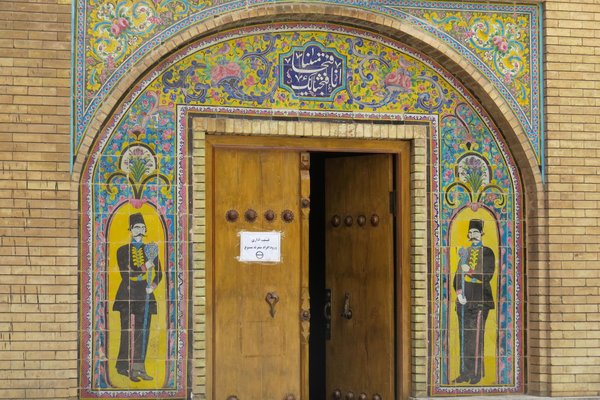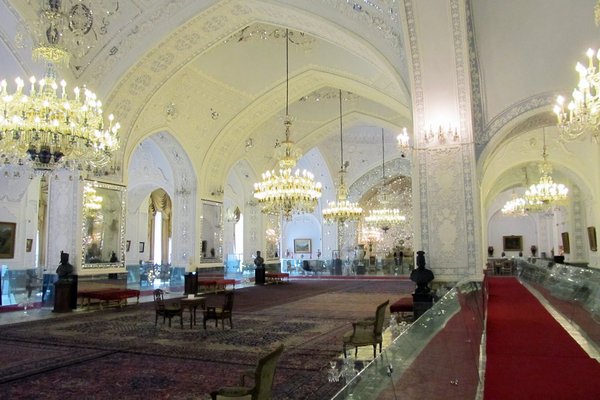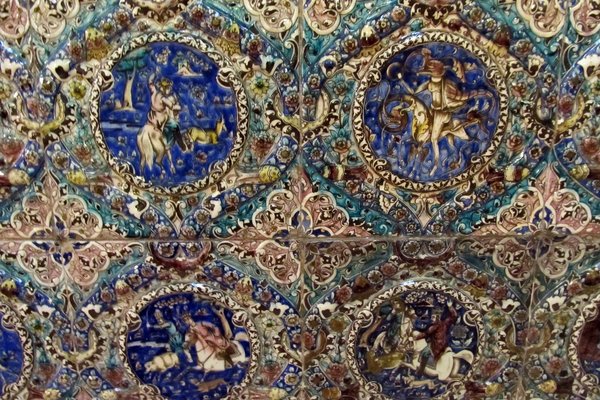Iran
Golestan Palace
The Golestan Palace is a 19th-century royal residence that shows the merging of Persian and European styles, motifs and architecture.
The buildings were once enclosed within the mud-thatched walls of Tehran's 16th-century Historic Citadel. The Palace was rebuilt to its current form in 1865 by Haji Abol-hasan Mimar Navai and is seen as an exceptional testimony to the Qajari Era. The site comprises eight palaces surrounding a garden.
Community Perspective: The painted tilework is a highlight here, as well as the marble throne and the tomb of Naser ed-Din Shah. The site is also notorious for its weird ticketing scheme, where you have to choose beforehand how many of the palaces/museums you want to enter and pay accordingly.
Site Info
Official Information
- Full Name
- Golestan Palace (ID: 1422)
- Country
- Iran
- Status
-
Inscribed 2013
Site history
History of Golestan Palace
- 2013: Advisory Body overruled
- ICOMOS advised referral
- 2013: Inscribed
- Inscribed
- Type
- Cultural
- Criteria
- i
- ii
- iii
- iv
Links
- UNESCO
- whc.unesco.org
- Official
-
- golestanpalace.ir — Golestan Palace
- Related
-
- anekdotique.com — A tiled beauty
All Links
UNESCO.org
- whc.unesco.org — whc.unesco.org/
Official Website
- golestanpalace.ir — Golestan Palace
Related Resources
- anekdotique.com — A tiled beauty
News Article
- Nov. 16, 2025 tehrantimes.com — Minister calls for halt to disputed construction near Golestan Palace
- Sept. 23, 2025 tehrantimes.com — Golestan Palace to reopen museums in phases from Sept. 23
- Feb. 5, 2023 tehrantimes.com — Centuries-old ruins discovered in UNESCO-designated palace downtown Tehran
Community Information
- Community Category
- Secular structure: Palace
Travel Information
Red Zone Travel Advisory
Teheran Hotspot
Recent Connections
-
Red Zone Travel Advisory
Iran fully off-limits -
Teheran Hotspot
In the city center -
Thrones
"The Marble Throne is a 250-year-old ro…
Connections of Golestan Palace
- Individual People
-
-
Naser ed-Din Shah
The most characteristic palaces in Golestan date back to the subsequent reign of Naser ed-Din Shah (1848-1896). These include the Imarat-e Badgir, already begun under Fat’h Ali Shah, the Shams-ol Imareh and the Kakh-e Asli (AB ev)
-
- Geography
-
-
Located in a Capital City
Teheran (Capital of Iran)
-
- Trivia
-
-
Modelled after
Edifice of the Sun (Shams ol Emareh): This building's two towers are in fact small versions of the Safavid viewing palace of Ālī Qāpū in Isfahan. (Wiki) (Meidan Emam WHS)
-
- History
-
-
Coronation Locations
"This spectacular terrace, known as the Marble Throne, was built in 1806 by order of Fath Ali Shah of Qajar (r. 1797-1834) Coronations of Qajar kings, and formal court ceremonies were held on this terrace. The last coronation to be held at the Marble Throne was the coronation of Reza Shah Pahlavi, in 1925." (Wiki) -
Fusion
successful integration of earlier Persian crafts and architecture with Western influences (brief description)
-
- Architecture
-
-
Chahar Bagh Gardens
Designed in 16th C with Chahar Bagh features. These were significantly altered during the 19th C but the Nom file still claims that the gardens maintain their "Iranian ambiance" (Nom File)
-
- Constructions
-
-
Badgir
Emarat Badgir (Building of the Wind Towers) -
Thrones
"The Marble Throne is a 250-year-old royal throne in Golestan Palace, Tehran, Iran."See en.wikipedia.org
-
- WHS on Other Lists
-
-
Memory of the World
Collection of Nezami's Panj Ganj (2011) lies partly in Golestan Palace; Prince Bayasanghor's Book of the Kings (2007) is in the Imperial Library at the Palace
-
- Timeline
-
-
Built in the 19th Century
it received its most characteristic features in the 19th century (Brief Description)
-
- WHS Hotspots
-
-
Teheran Hotspot
In the city center
-
- Visiting conditions
-
-
Red Zone Travel Advisory
Iran fully off-limits -
Shoe covers required
-
News
- tehrantimes.com 11/16/2025
- Minister calls for halt to dispute…
- tehrantimes.com 09/23/2025
- Golestan Palace to reopen museums …
- tehrantimes.com 02/05/2023
- Centuries-old ruins discovered in …
Recent Visitors
Visitors of Golestan Palace
- AC
- Adrian Turtschi
- Afshin Iranpour
- Alexander Barabanov
- Alexander Parsons
- A. Mehmet Haksever
- Ammon Watkins
- Artur Anuszewski
- Ask Gudmundsen
- Aspasia
- Atila Ege
- AYB
- Bamse
- BaziFettehenne
- Bernard Joseph Esposo Guerrero
- Bill Maurmann
- Bram de Bruin
- Carlo Sarion
- Chalamphol Therakul
- Chantal den Haan
- Christian Wagner
- David Marton
- Dimitrios Polychronopoulos
- Dorejd
- Els Slots
- Emili Xaus
- Erik Jelinek
- Eva Kisgyorgy
- Fan Yibo
- fedemarch92
- Fmaiolo@yahoo.com
- George Gdanski
- Hammeel
- Harald T.
- Harry Mitsidis
- henryjiao18
- Ivan Rucek
- Jacob Otten
- janis
- Janos
- Jarek Pokrzywnicki
- Jean Lecaillon
- John Smaranda
- Jonas Kremer
- Jon Opol
- Joyce van Soest
- Juha Sjoeblom
- jxrocky
- Ken DJ
- Kevin247
- kiank37
- Knut
- Krijn
- LaVale
- Loic Pedras
- Luis Filipe Gaspar
- Maciej Gil
- Malgorzata Kopczynska
- Marcobrey
- Martin
- Martina Rúčková
- MaYumin
- Miloš Tašković
- MoPython
- Naim Y
- Nihal Ege
- opperpco3
- Palimpsesto
- Patrik_globe
- Philipp Leu
- qwertzlbry
- Rodinia
- Roger Ourset
- Roman Bruehwiler
- Sergio Arjona
- Solivagant
- Ssong.x
- Stanislaw Warwas
- Szucs Tamas
- Tamara Ratz
- Taotao Chen
- Tarquinio_Superbo
- Thomas Buechler
- Timothy C Easton
- Tinamu
- Tony H.
- triath
- Vsacan
- Westwards
- Wojciech Fedoruk
- Wo_ko
- Xander Huang
- Xiquinho Silva
- Yongcheng Liu
- Zoë Sheng
Community Reviews
Show full reviews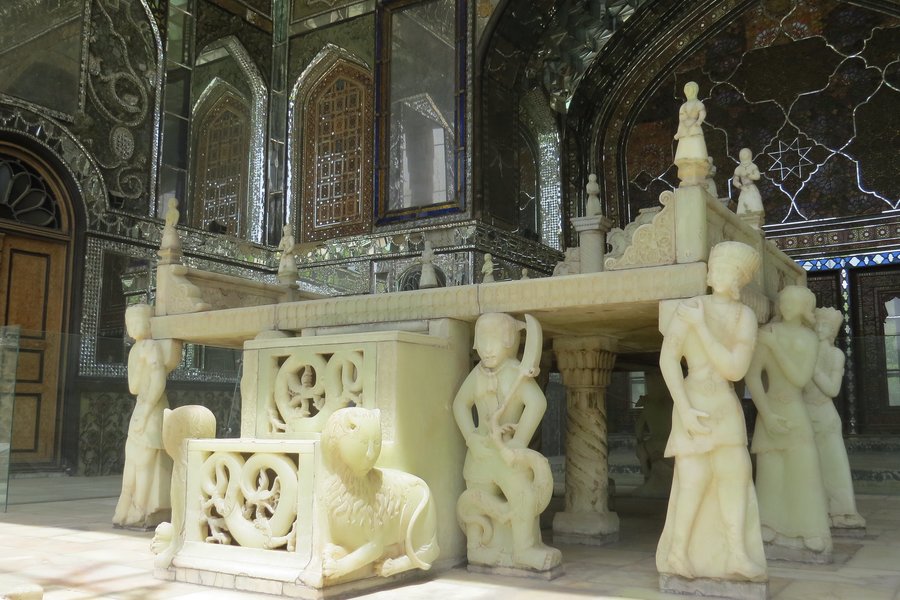
Golestan Palace is the most recent construction on the timeline of Iranian WHS, dating from the 19th-century Qajar dynasty. It is also possibly the only real attraction of Tehran, a metropolis of 10 to 15 million inhabitants. Because of its location in the capital’s city center, it is the most visited Iranian WHS among our community after the ones in Esfahan. Still, this results in only a meager 696th spot overall.
Despite its relative fame, the palace is not so easy to find for an individual visitor. It lies just off a main boulevard and is surrounded by much higher government buildings from the 1960s and 70s. The construction thereof by the government of the last Shah was made at the expense of older buildings belonging to the Golestan Palace (such as a theater).
When you finally find yourself at the entrance gate, there’s a big decision to make: how many of the 8 buildings/museums warrant a visit? Because on top of the 2x 150,000 Rial entrance fee to the grounds and the main buildings, there are additional fees of 80,000 each for the others. I decided to settle for 3 extra tickets: to the Building of the Windcatchers, Edifice of the Sun, and the White Palace. It turned out that the actual tickets do not mention a specific building, so in the end, you can always switch to another one if that appears more interesting.
I first did a full lap around the palace grounds to photograph the lovely …
Keep reading 0 comments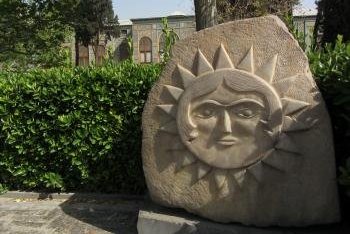
My visit to the Golestan Palace got off to a bit of a rocky start. It was 15 minutes after 'opening' time, and while there was already a line of foreign and local tourists waiting to go in, the man at the desk resolutely ignored everyone. Eventually, another man appeared, 'coincidentally' at the exact same time as a large French tour group, to start issuing tickets. He seemed offended when I wanted to be served before them, even though I'd been in line for 20 minutes.
The ticketing process itself is pretty arcane. Base entry price (circa April 2016) was 150, 000 rial (5USDish), a ticket to see the main attractions (the throne, hall of mirrors, etc) another 150, 000, and eight (!!!) other rooms (such as Persian paintings, European paintings, royal gifts) each costing 80, 000 and requiring their own printed ticket. The total price for everything was 940, 000 rial, or something like 30USD. I declined this offer, and settled on the two main tickets.
The garden area is pleasant enough, but not spectacular. The ornate throne room is covered by scaffolding and a large fabric curtain, but the guards did not mind me peeking my head and camera through the middle. I've seen perhaps too many European palaces in my time to still be enthused by opulent room interiors, and the Golestan Palace isn't really an exception. It was explicitly inspired by a visit from.the Shah to Versailles, and is inscribed for its nature as a Persian …
Keep reading 0 comments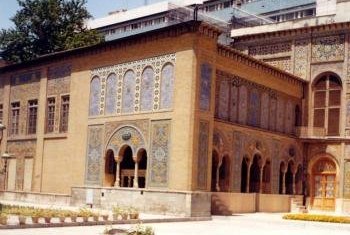
For most overseas travellers Tehran is inevitable in Iran, being the most likely entry pont and central transport hub. But the notorious traffic jams and dull concrete blocks make you feel like leaving the city as soon as possible. In other parts of the world "bustling nightlife" could outbalance the architectural disadvantages - but in the Islamic Rapublic amenities are limited to some pizzerias (forced to close if they play Western music too loud), traditional tea houses (can be fun once), cinemas (playing Iranian movies in Persian), and family picnicks (not for tourists unless you are invited).
What brings some - not too much - light into this grey concrete town, is the imperial past. The palaces are must see, as well as the tresury of the National Bank, where the crown jewels are deposited. As before the 18th century Tehran did not play an important role in the history of iran, the palaces are also quite young. Saadabad, the luxury hideout of Mohamed Reza Pahlavi, the last shah is a glitzy mid 20th century villa, that reflects the sophisticated taste and glamurous lifstyle of Farah Diba.
Golestan Palace is different. It was originally a regional royal residence built within the mud thatched walls of Theran. The major works begun with the rise of the Qajars at the end of the 18th century. Though it is not really old, its style reflects the age old Iranian traditions. Desptie the growing French and Russian influence in Iran the lifstyle of the …
Keep reading 0 comments
